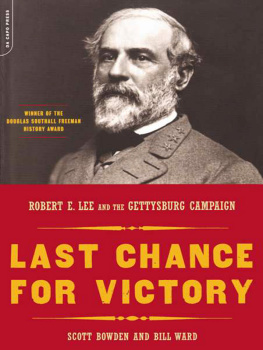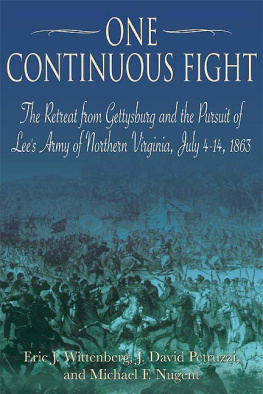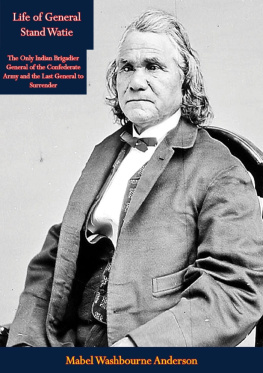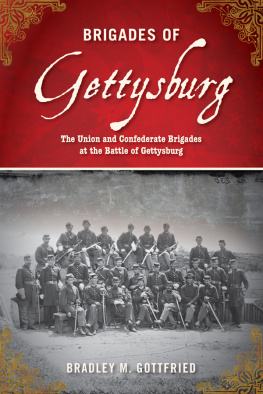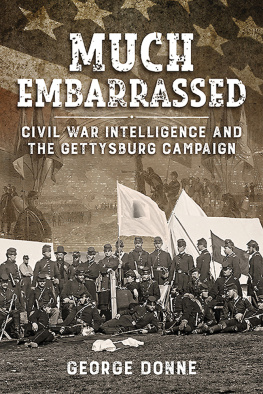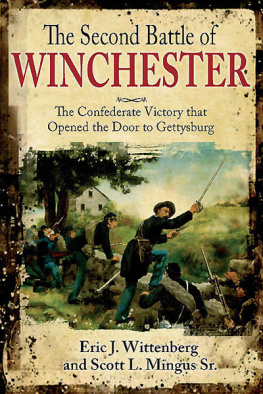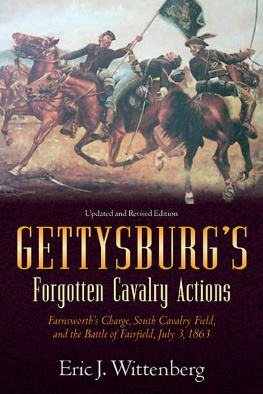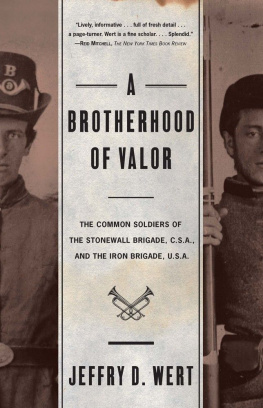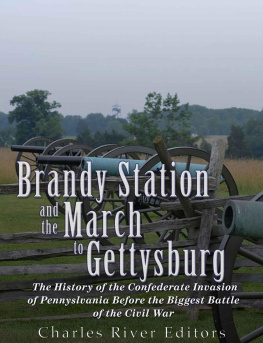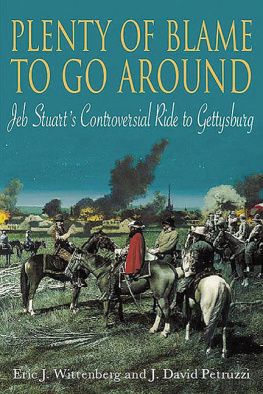Published by The History Press
Charleston, SC 29403
www.historypress.net
Copyright 2012 by Cooper H. Wingert
All rights reserved
Front cover: Passing Through, by Don Stivers.
First published 2012
e-book edition 2012
Manufactured in the United States
ISBN 978.1.61423.758.7
Library of Congress CIP data applied for.
print ISBN 978.1.60949.858.0
Notice: The information in this book is true and complete to the best of our knowledge. It is offered without guarantee on the part of the author or The History Press. The author and The History Press disclaim all liability in connection with the use of this book.
All rights reserved. No part of this book may be reproduced or transmitted in any form whatsoever without prior written permission from the publisher except in the case of brief quotations embodied in critical articles and reviews.
Contents
Foreword
If Harrisburg comes within your means, capture it. With those words, famed Confederate General Robert E. Lee set in motion a march toward the riverfront capital of Pennsylvania, the second most populous state in the Union. While his primary goals were to resupply his army from Northern bounties and to draw the Federal army out of Virginia for a potentially decisive battle, the chance to seize Harrisburg offered an important political prize. The Civil War had dragged on for more than two years, and Lee recognized that the Union, with its superior resources and manpower, eventually would win any protracted conflict. Invading the North, and possibly whipping the Yankees on their home turf, might bring the United States to the negotiating table.
Lee had invaded Maryland in September 1862 before being turned back in bitter fighting at Sharpsburg. Over the winter, he planned another attempt, commissioning maps of the Cumberland Valley and other key points in Pennsylvania. Following the battle of Chancellorsville in May 1863, Lee met with President Jefferson Davis and other key Confederate leaders to discuss his plans. On June 3, he began his aggressive movement toward the Shenandoah and Cumberland Valleys.
With the Union Army of the Potomac several days behind Lees advance forces, the defense of Pennsylvania fell to an eclectic mix of untrained home guards, hastily recruited state militia and troops lent by neighboring states. Their officers and leaders also brought mixed talents, skills and experience to the daunting task of protecting the Keystone State.
In this book, Cooper H. Wingert aptly tells the story of the Confederate movement toward Harrisburg and the feverish efforts of Pennsylvanias governor and U.S. military officials to prepare for a Rebel assault. The author has pored through scores of primary sources such as soldiers remembrances, old newspaper accounts, civilian postwar damage claims and other accounts to connect the story of the invaders, defenders and civilians caught in the path of two armies at war.
Scott L. Mingus Sr.
Civil War writer and lecturer, author of Flames Beyond Gettysburg:
The Confederate Expedition to the Susquehanna River, June 1863
York, Pennsylvania
Acknowledgements
There are many who have made invaluable contributions to the completion of this volume, which has been three years in the works. Scott Mingus of York, Pennsylvania, has most generously spent countless hours editing and advising me on this manuscript, giving suggestions down to every trifle. Jim Schmick of Enola, Pennsylvania, has provided valued assistance throughout the entire process. John Heiser of Gettysburg made the wonderful maps that accompany this volume on short notice and, additionally, suggested many new leads that were most appreciatively used. Dr. Richard J. Sommers of the USAMHI in Carlisle provided his knowledgeable insight, along with many suggestions and sources.
Hannah Cassilly and all the good folks at The History Press have been especially kind and receptive, answering without complaint my mind-numbing and voluminous questions. Many others have done similar: Gregg Clemmer, North Potomac, Maryland; Ken Frew, Dauphin County Historical Society; Lawrence E. Keener-Farley, Camp Hill, Pennsylvania; Brian Stuart Kesterson, Lubeck, West Virginia; Carl Klase, assistant administrator, Pennypacker Mills, Schwenksville, Pennsylvania; Robin Lighty, Camp Hill, Pennsylvania; Jack Thomas, Hershey, Pennsylvania; Richard Tritt, photo curator, Cumberland County Historical Society. Additionally, the staffs of all the libraries listed in the bibliography were extremely helpful.
Chapter 1
Harrisburg in Distress
It was pitch dark as many of the senior commanders of the Federal Army of the Potomac huddled in council past midnight on May 4, 1863. Their topic of discussion would have been inconceivable to anyone in the groupor for that matter any soldier in the large Northern armya mere week ago. Then, in the last days of April, the Army of the Potomac boasted over 130,000 men, an imposing size compared to the meager Southern forces opposing them. Nearly all were extremely confident in their ability to deal with Robert E. Lees Army of Northern Virginia. However, the sheer thickness of the so-called Wildernessthe dense, overgrown woods that enveloped the area west of Fredericksburg, Virginia, and south of the Rappahannock and Rapidan Riversseemed to clog the thought process of army commander Major General Joseph O. Hooker as much as it did the pace of his armys march.
Hooker, who had frequently boasted of his upcoming offensive, soon stalled his progress around the Chancellor house when a bold counteroffensive by Lee and legendary corps commander Thomas Jonathan Stonewall Jackson stunned him. The battle took a turn for the worse for Fighting Joe when Lee dispatched Jackson as a flanking column. Stonewalls veterans reaped havoc on Hookers bewildered army, whose right flank soon collapsed. Hookers confidence and grand plans of a marvelous victory faded away before him.
So brought Hooker and five of the armys seven corps commanders to this unwelcome meeting. The befuddled Hooker thought of retreat and only that. It was seen by the most casual observer that he had made up his mind to retreat, later opined Second Corps commander Major General Darius N. Couch. We were left by ourselves to consult, recollected Couch. A vote was taken, resulting three to two in favor of offensive operations. Hooker sauntered back to the tent and, after being informed of the vote, announced that he should take upon himself the responsibility of retiring the army to the other side of the river. That was only another step in the beginning of the end for Fighting Joes tenure at the helm of the Army of the Potomac. With that move, he did little to soothe his subordinates anger. As Fighting Joe lost the tenacity garnered him by his sobriquet, Robert E. Lee basked in it.
HARRISBURG
Laid out in 1785 and incorporated as a borough in 1791, Harrisburg became Pennsylvanias capital in 1812. The towns founder, John Harris Jr., boasted to one traveler in 1788 that three years ago there was but one house built, and soon it had become a rapidly growing town on the eastern banks of the Susquehanna River. Harrisburg is most picturesquely situated, raved one observer. There are few cities which in proportion have such a large number of merchants keeping retail stores, described eighteenth-century traveler Theophile Cazenove.


